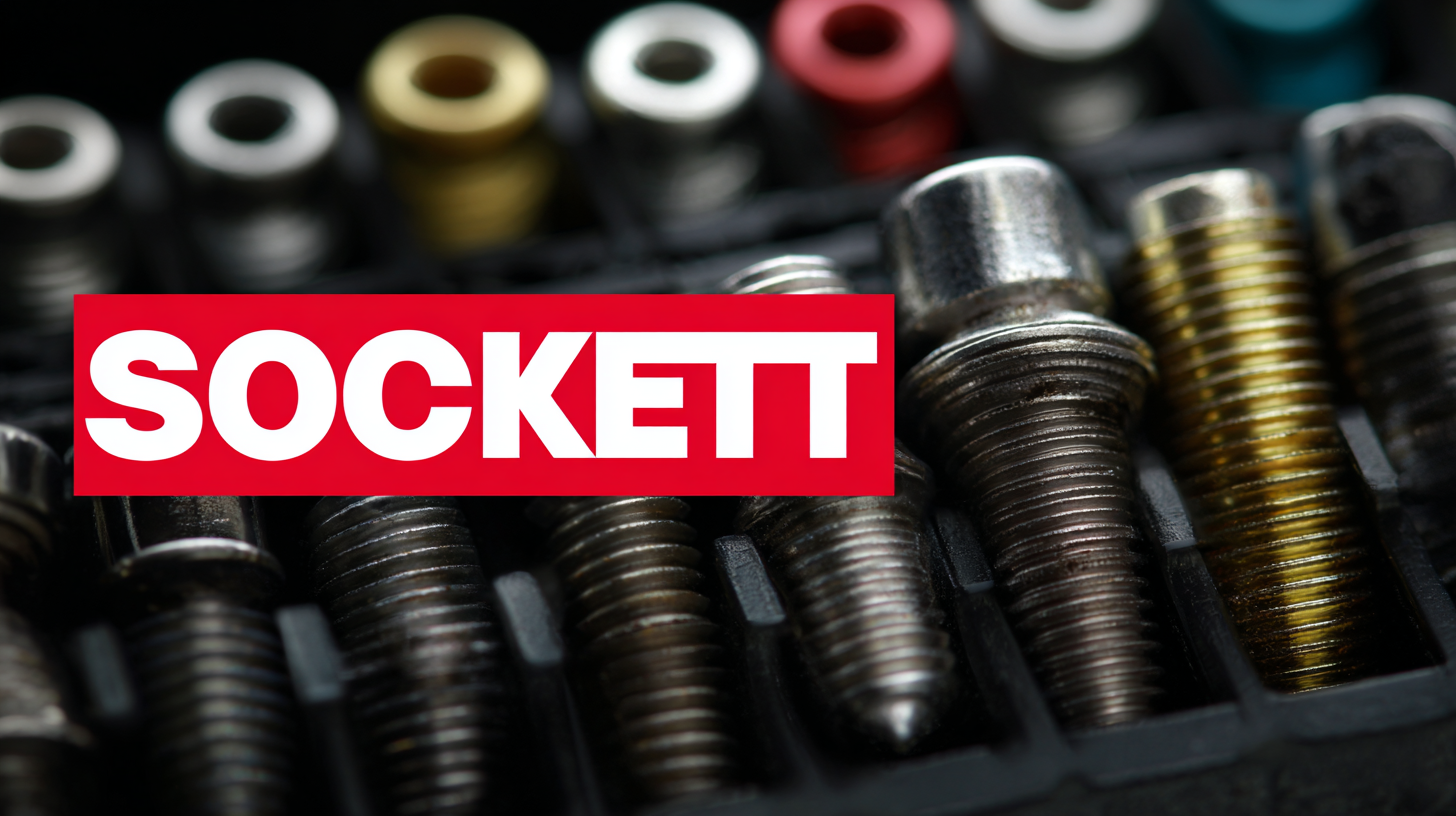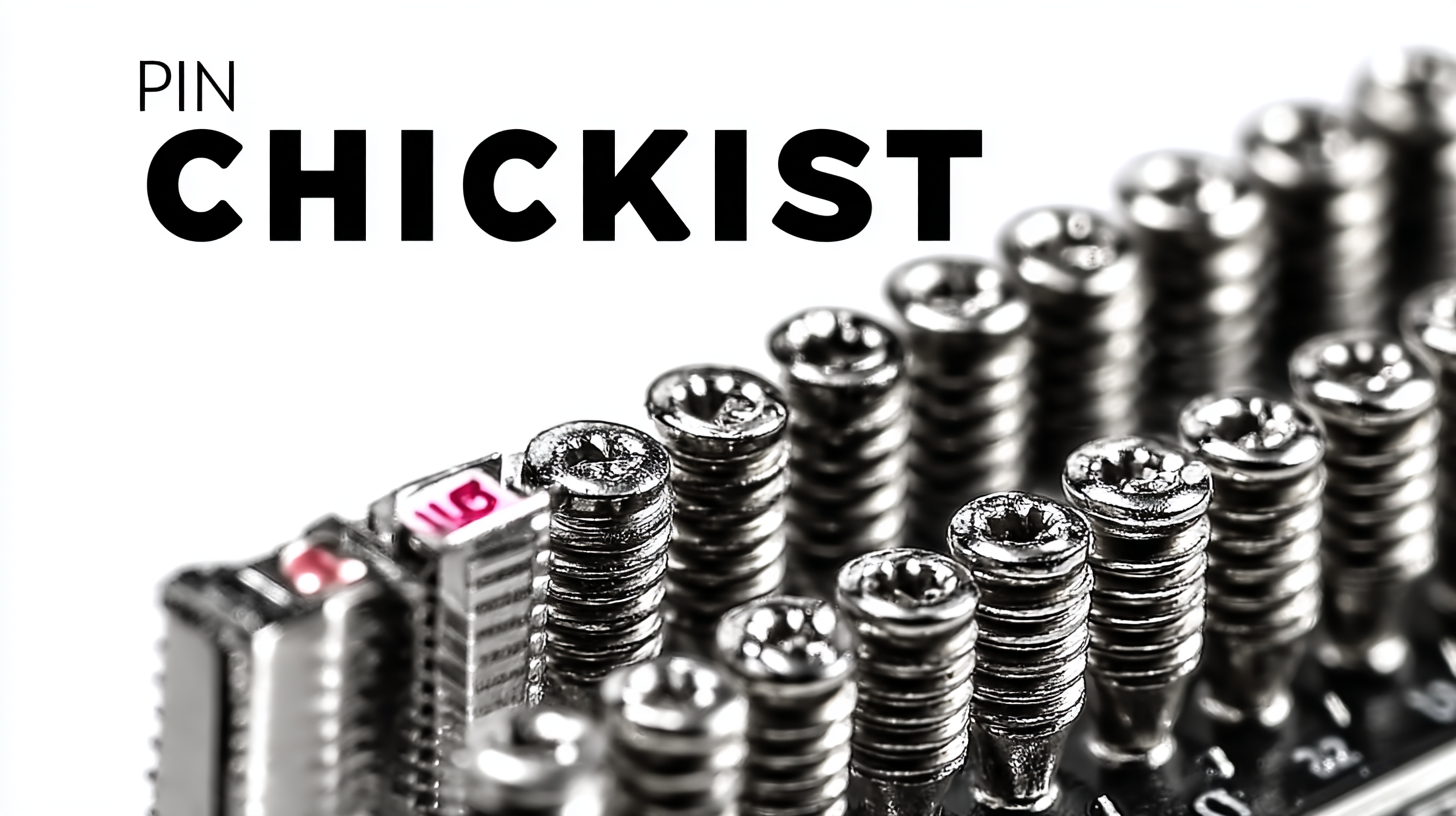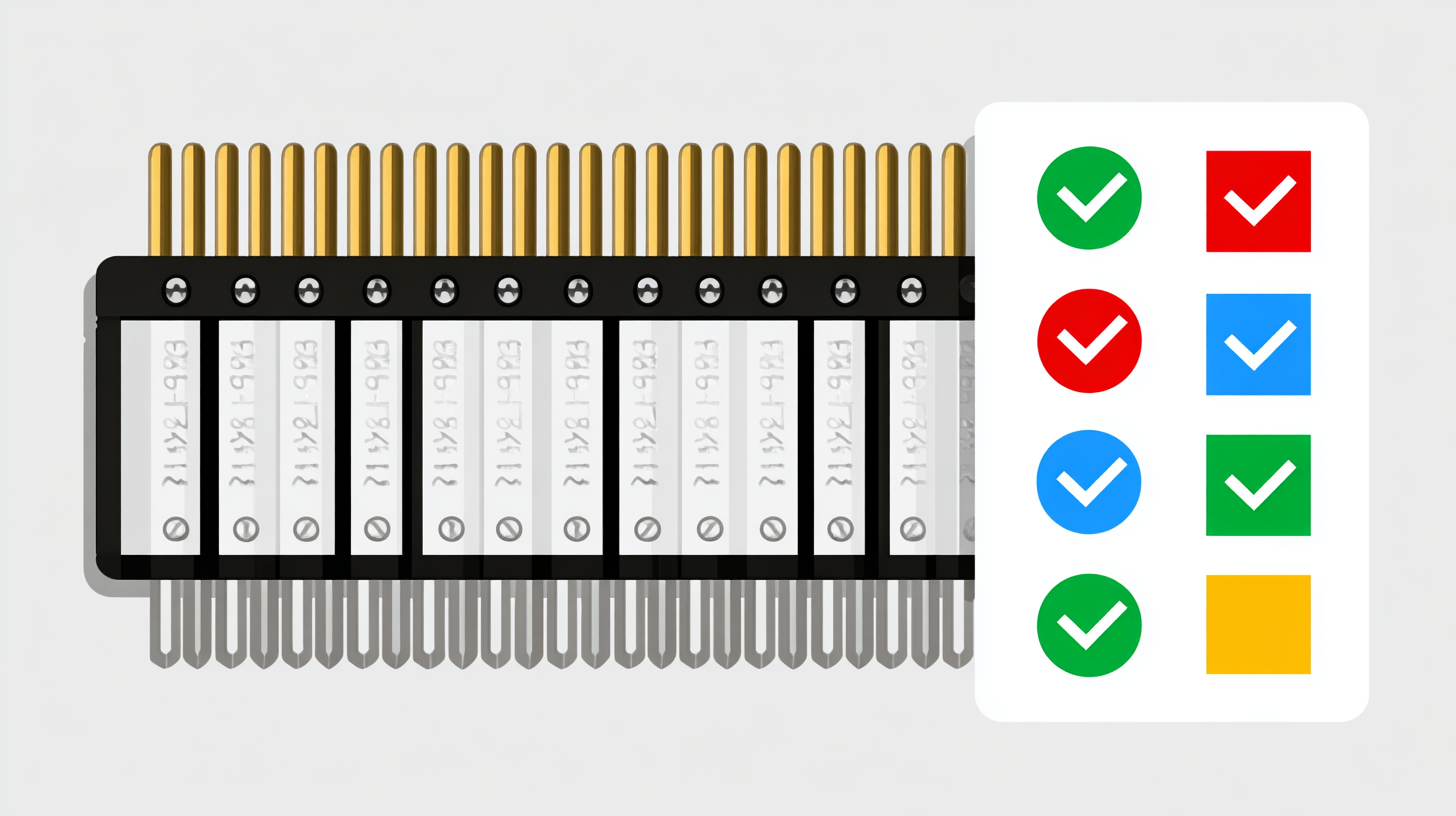


In today's rapidly evolving electronics industry, the importance of efficient procurement processes cannot be overstated, especially when it comes to components like Socket Pin Headers. According to a recent report by MarketsandMarkets, the global market for electronic connectors is anticipated to reach USD 80 billion by 2025, highlighting the growing demand for high-quality, reliable components. Socket Pin Headers, essential for establishing durable connections in various electronic devices, require careful selection to ensure compliance with industry standards and certifications. Navigating the complexities of import and export regulations further complicates the procurement process, necessitating a comprehensive checklist to streamline selection and sourcing. This blog aims to guide you through the essential steps in completing your procurement process for Socket Pin Headers, ensuring that you meet all necessary guidelines for efficient and effective electronic assembly.

As we approach 2025, the socket pin header technology is evolving rapidly, driven by the demand for greater efficiency and miniaturization in electronic designs. According to a report by MarketsandMarkets, the global market for pin headers is expected to reach $3 billion by 2025, growing at a CAGR of 5.6%. This growth is largely attributed to the surge in demand from sectors such as telecommunications and automotive, where high-density interconnections are becoming increasingly critical.
Furthermore, emerging trends indicate a shift toward the adoption of environmentally sustainable materials in socket pin header manufacturing. A study from Frost & Sullivan highlights that over 30% of manufacturers are prioritizing eco-friendly materials in their production processes, responding to the global push for greener electronics. Additionally, advancements in surface mount technology (SMT) are enabling more compact designs, which are essential for modern circuit boards. As technology continues to advance, the integration of smart features in socket pin headers, such as built-in sensors for real-time performance monitoring, is becoming a reality, enhancing both functionality and user experience in sophisticated electronic applications.
When it comes to selecting high-quality socket pin headers, there are essential features that one must consider to ensure durability and performance in today's advanced PC components. First, look for headers that offer a reliable connection with gold-plated pins, which enhance conductivity and resist corrosion over time. As systems increasingly utilize features like PCIe 5.0 and DDR5, high-quality socket pin headers are critical for supporting these technologies, ensuring optimal data transfer rates and system performance.

Additionally, prioritize socket pin headers that are designed for EMI (Electromagnetic Interference) protection. As modern motherboards become more sophisticated, it's vital to choose components that can minimize signal interference, especially when dealing with high-speed data transfers. Advanced designs with reinforced locking mechanisms will also ensure that headers remain securely connected, further stabilizing your system configuration.
Investing in high-quality socket pin headers not only increases system reliability but also supports the burgeoning demands of high-performance computing.
When it comes to streamlining your procurement process for socket pin headers, having a structured approach is essential. This step-by-step guide will help you enhance efficiency and ensure you make informed decisions. Start by defining your project requirements clearly. Knowing the specifications, such as pitch dimensions, number of pins, and material compatibility, will help you narrow down your options significantly.

One crucial tip is to research multiple suppliers. Compare their product offerings, price points, and customer reviews. This not only gives you a broad view of the market but also helps in negotiating better deals. Additionally, ask for samples before making bulk orders to ensure the headers meet your quality standards. Establishing a relationship with trustworthy suppliers can also facilitate smoother transactions in the future.
Finally, keep an eye on lead times and stock availability. Delays can derail your project, so it's vital to understand the supplier’s timeline and build some buffer into your procurement schedule. Monitoring inventory levels and opting for suppliers with reliable delivery records will further streamline the process, allowing you to focus on other critical aspects of your project.
The supply chain for socket pin headers faces significant challenges as the demand for electronic components continues to rise. According to a report by MarketsandMarkets, the global market for electronic connectors, including socket pin headers, is projected to reach $76 billion by 2026, growing at a CAGR of 6.2%. This increasing demand puts pressure on manufacturers to streamline their operations and ensure timely delivery, but it also exposes them to risks such as material shortages and geopolitical tensions.
Moreover, the semiconductor shortage, which has affected various industries, has created cascading effects on the production of socket pin headers. A study by McKinsey highlights that the supply chain disruptions caused by the pandemic could take years to resolve, emphasizing the need for manufacturers to diversify their supply sources. As companies look to mitigate these risks, adopting strategic sourcing practices and investing in local manufacturing capabilities may become critical steps in overcoming future challenges. The resilience of socket pin header supply chains will ultimately depend on how well industry players adapt to these evolving dynamics.
When sourcing socket pin headers, selecting reliable manufacturers is pivotal for ensuring product longevity and performance. According to a recent industry report by MarketsandMarkets, the global market for connectors is projected to reach $100 billion by 2025, driven by the increasing demand in automotive, telecommunications, and consumer electronics sectors. This growth underscores the importance of choosing manufacturers with a proven track record and high-quality materials.
Top manufacturers like Molex, TE Connectivity, and Amphenol consistently rank high in reliability and performance. These companies invest heavily in research and development, ensuring their products meet stringent industry standards. In fact, a study by Technavio indicates that the global socket pin header market is expected to witness a CAGR of 6% between 2021 and 2025, reflecting the emphasis on quality from leading manufacturers.
Tip: When evaluating manufacturers, look for those offering detailed specifications and compliance with international standards such as RoHS and REACH. Verifying certifications can save time and reduce the risk associated with counterfeit components.
Tip: Consider manufacturers that provide comprehensive technical support and resources for integration with your design, as this can significantly streamline your procurement process. Building a relationship with a trusted supplier can lead to better pricing and access to new technologies.
